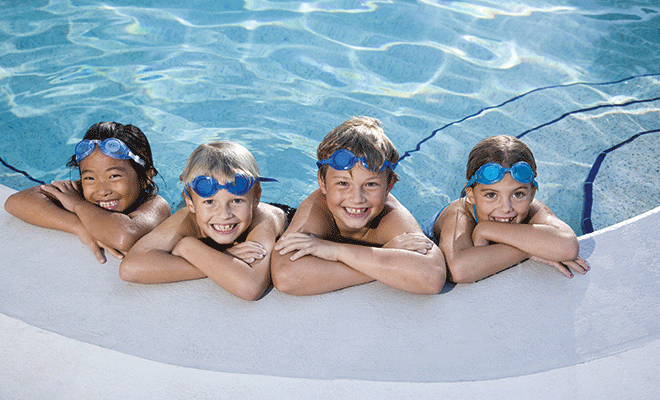
Secure swimming: your best bet to splashing safely
Summer and swimming; swimming and summer–the most popular activity in the warmer months is hitting the beach, pool or lake. Kids of all ages are splashing, diving, belly busting and soaking up summertime for all it’s worth.
But with warmer weather come scary statistics, and alarmingly, many of us think we are much better swimmers than we actually are. In a 2014 survey conducted by the American Red Cross, 80 percent of Americans said they could swim, but only 56 percent of those “swimmers” can perform all five basic skills that could save their life in the water. These water competency skills are the ability to do the following:
1. Step or jump into water over your head and return to surface
2. Float or tread water for one minute
3. Turn around in a full circle and find an exit
4. Swim 25 yards to the exit
5. Exit from the water. If you’re in a pool, you must be able to exit without using the ladder.
The survey found that more than half of all Americans can’t swim or can’t complete these basic swimming skills. Approximately ten people die each day from drowning; 20 percent of these deaths are children age 14 or younger. In addition, for every child who dies from drowning, another five receive emergency department care for nonfatal submersion injuries.
The lessons
When it comes to water, the most beneficial thing you can do to keep you and your family safe is to take swim lessons. Look for classes that start water acclimation early, as it is never too soon to get children used to the water.
Make sure the instructors are in the water with the students with a small instructor-to-student ratio, such as four to six kids to one teacher. Swim lessons should teach survival skills FIRST, then strokes. All children should be able to float on their backs and call for help. Progression in your child’s swim lessons should be based on their ability, not their age, so look for swim instructors that are trained as swim instructors. Just because someone is a lifeguard doesn’t mean they will be good at teaching someone else how to swim.
For adults, it’s never too late to take swim lessons. Whether you never learned how to swim, haven’t been around the water for some time or just want to gain more confidence in the water, swimming lessons can save your life or someone else’s. Look for classes specifically for adults that are tailored to your current water skills.
Ditch the distractions
When it comes to children swimming safely, there’s no substitution for parental supervision. Practice CEO–Constant Eyes On. That means no cell phone or taking your eyes from them to converse with a friend, not even for a second. Drowning is quiet and quick. And never assume someone else is watching your child. You are the only person responsible for their safety.
Moreover, don’t rely on equipment to keep your children above water. The American Academy of Pediatrics warns that inflatable toys, rafts, noodles and water wings should never be used as lifesaving devices for children, even if a lifeguard is on duty.
Your home pool
Having a home pool or spa in your backyard increases the likelihood of outdoor emergencies, whether it’s with your own family or someone else’s. Most water deaths and injuries involve children ages one to two and occur in residential settings. Alarmingly, most accidental drownings of young children occur in home pools; most of those victims were reported being seen inside the home less than five minutes before, while in the care of at least one parent.
It takes only inches of water for a small child to drown, and although most drownings occur in the summer months, water safety is something everyone should be concerned about all year long. By taking extra precautions around all bodies of water, we can keep ourselves and everyone around us safe and enjoying the summer sun. HLM
Sources: redcross.org and poolsafely.gov. For more information, contact the Training Support Center at 1-800-RED-CROSS.
Owning a pool comes with major responsibilities, so make sure you and anyone near your pool are safe.
– Enroll in Red Cross home pool safety, water safety, first aid and CPR/AED courses.
– Build or install a four-foot or taller fence around the pool with self-closing gates.
– If your house functions as the fourth side of a fence around a pool, install door alarms and make sure they are always on.
– Install pool and gate alarms to alert you when children go near the water.
– Make sure the drain covers are compliant and in good working order.
– Consider installing a surface wave or underwater alarm.
– Install locks on hot tubs and spas.







